In the portrait Bester I, Mayotte, the sitter’s eyes stare directly at the camera, practically boring a hole in the lens. Their lips are painted white, their hair and ears adorned with clothespins. The self-portrait of Zanele Muholi is striking on its own, but it does not stand alone. It’s a continuation of the work they have been doing for close to two decades, documenting the lives of Black lesbian, gay, bisexual, transgender and intersex people in townships in South Africa.
Muholi’s visual projects are all rooted in their desire to create a Black queer and trans visual history of South Africa. They see their work as a form of resistance, showing lived experiences that have long been marginalized, and even erased. A major retrospective of that rich body of work is now on display at London’s Tate Modern, the largest such exhibition of Muholi’s work. Originally scheduled to open in April, and postponed twice due to the pandemic, the show will be on display until June 2021 with timed ticketing and social distancing measures in place, before touring across Europe at institutions in Paris, Berlin and Umeå in Sweden.
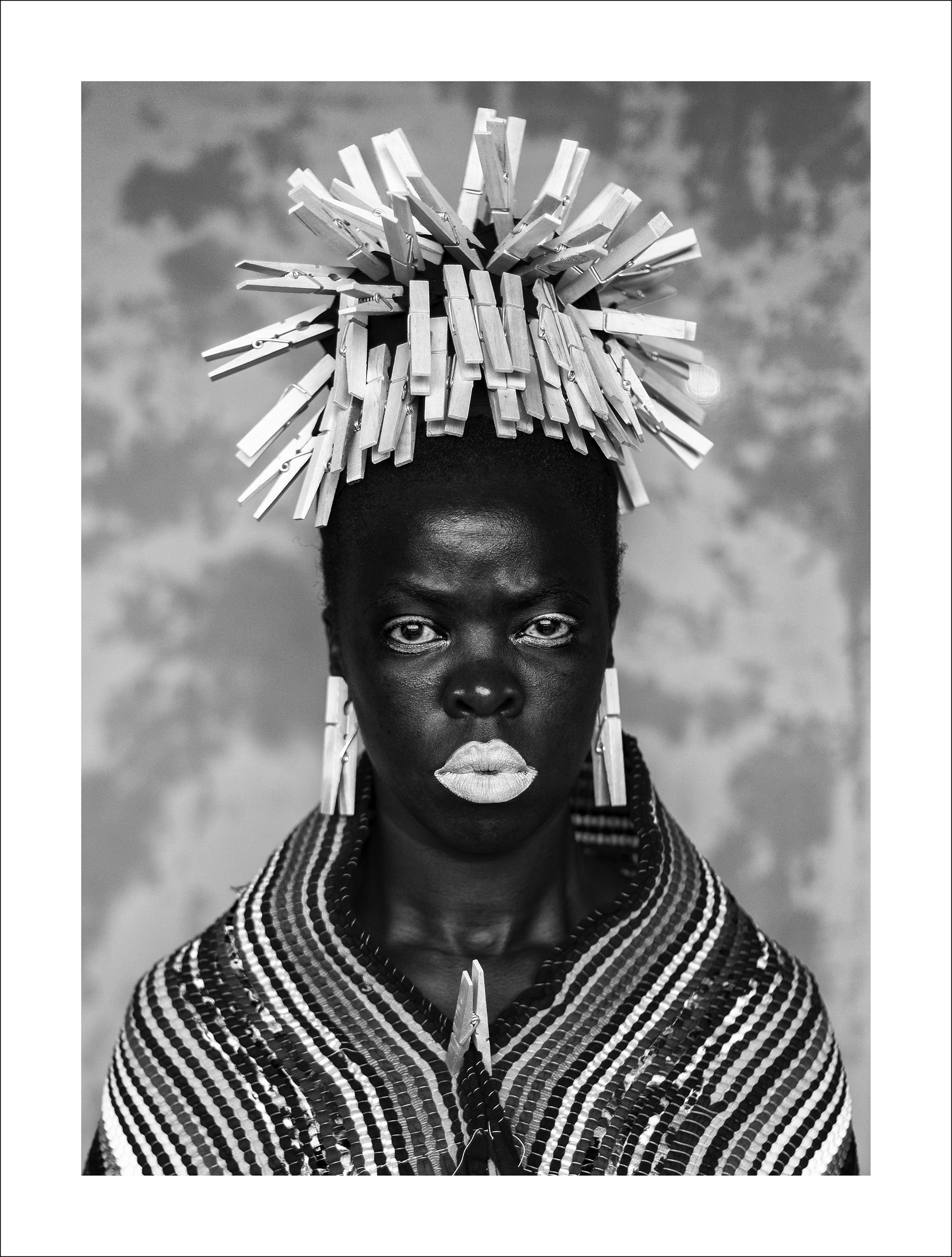
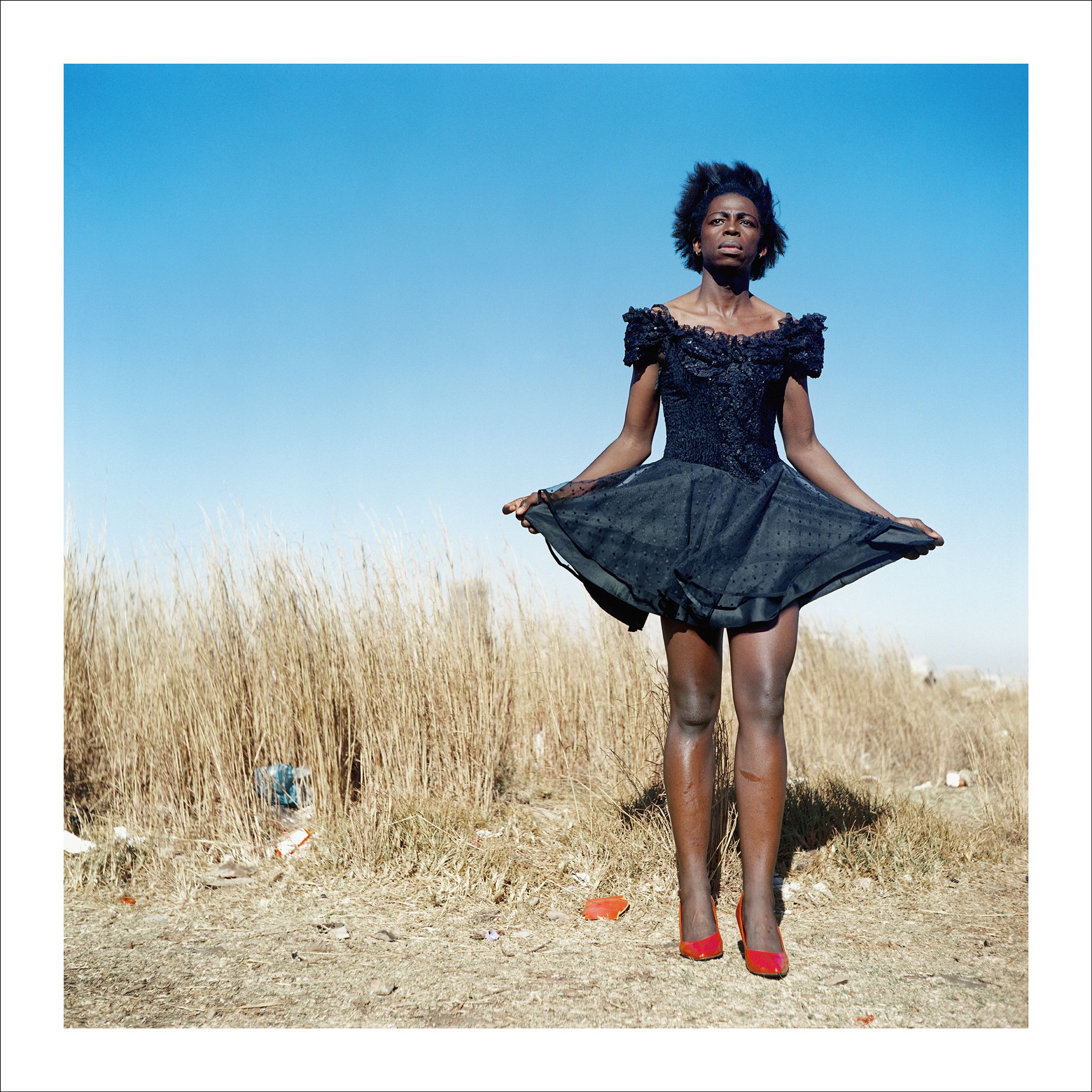
The mid-career retrospective arrives during a year of two major global events: the coronavirus pandemic and the resurgence of the Black Lives Matter movement. Muholi’s lifelong work has always been a celebration of Blackness and queerness, but they see the present as a time of great possibility. “It’s this togetherness, this unity and humanity that is attached to this exhibition that makes me happy,” they told TIME during a recent phone call. “These things mattered to me before we even spoke about it. But, at this particular period, we’re talking of radical change that is happening around the world, when people are talking about inclusion in all true senses.”
The responsibility of visual activism
Muholi has always pushed for radical change within their work, using visual images to put forward a political agenda that insists that Black LGBTQIA+ South Africans are not only seen, but intentionally take up space in the world. Eschewing the categories of “artist” and “activist,” they refer to their role as a visual activist, seeing the two as inextricably linked. “In each and every thing we do, there is some element of activism,” says Muholi.
As the Black Lives Matter movement reignited the fight for racial justice both in the U.S. and globally earlier in the year, Muholi followed the events “with pain, to think of so many lives that have been claimed unnecessarily, and people are not being held accountable for it.” They also observed a rise—a continuation, really—in visual activism by everyday citizens. Around the world, people with smartphones digitally documented acts of racial injustice against Black people, uploading the evidence for all to see on social media. The video of the police killing of George Floyd in Minneapolis, the live stream of the Nigerian Army appearing to shoot at protesters in Lagos, the filming of a white woman in New York City’s Central Park threatening to call the police on an unarmed Black man all gained international attention—and spurred action—after being posted online. Muholi sees the umbrella of visual activism as large enough to cover both their own practice and instances like these. “When you ask me about visual activism—so you have your camera in your hands and then you see something happens. What do you do?” they ask, not just in answer to an interview question but as an entreaty to those who have never considered that they, too, might fulfill such a role. “You have a responsibility to document that crime scene and circulate it so that the world sees what is going on and takes action.”
Muholi knows well what it means to both document and act. Their exhibition includes work spanning from 2003 to the present day, from the intimacy of the everyday life documented in the Only Half the Picture series (2003-2006), to the striking, assertive portraits of transgender women and beauty queens in Brave Beauties (2014-ongoing). Muholi, who studied documentary photography in the early 2000s, refers to the people they photograph as “participants” rather than “subjects.” They photograph people they are familiar with, people within their community, or friends of friends. The ongoing Faces and Phases project, which started in 2006, now numbers several hundred photographs creating a rich archive of Black lesbian, transgender and non-binary individuals.
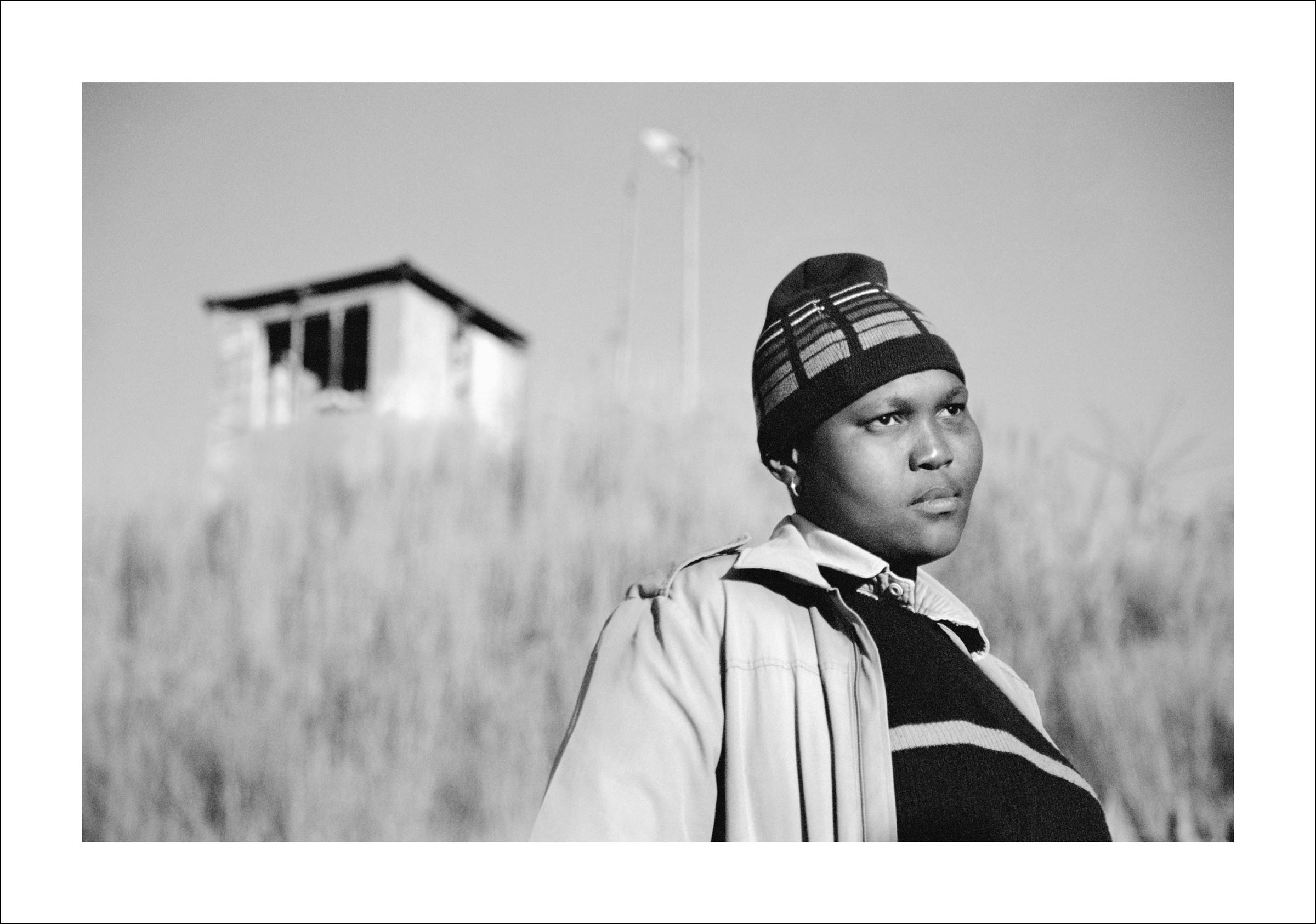
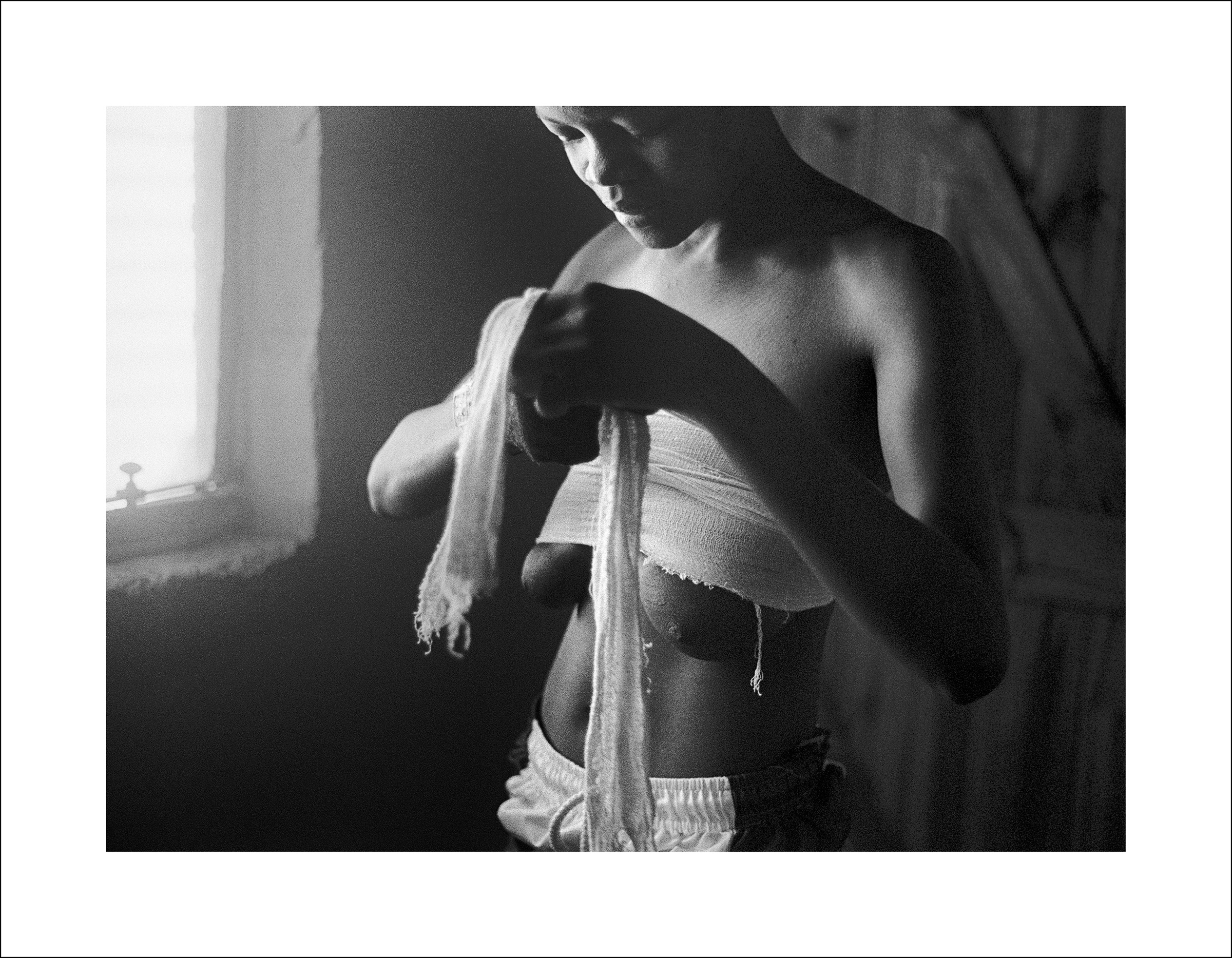
Many of these participants have been impacted by HIV/AIDS, experiences underscored by moving poetry and tributes included in the exhibition’s catalogue. Poet and activist Busi Sigasa was the first person that Muholi photographed for Faces and Phases; Sigasa’s poem “Remember Me When I’m Gone” accompanies the portrait of her that Muholi took at Constitution Hill in Johannesburg in 2006. Sigasa was a survivor of “corrective rape,” a hate crime in which a person is raped because of their perceived sexual orientation or gender identity. She died at the age of 25, a year after Muholi made the striking photograph of her gazing into the middle distance. “For I… Wrote stories for the nations to read/Stood without fear and told my story,” reads Sigasa’s poem.
Creating a living history
Continuing to tell those stories is Muholi’s mission, through creating and documenting this living history. “To think that people are being recognized and respected and have been given a space to be themselves—it heals. For too long, people have been ignored and disrespected,” they say. “The archive means we are counted in history.” Their hope is that the next generation can have access to their work, connecting with the experiences of people who have often been excluded, through an immediate and tangible visual image. “Our people will remain in historical books, and that heals. I’m talking about the presence and existence of people that look like me, that feel like me, who are here and part and parcel of this beautiful country called South Africa.”
Muholi participated in South Africa’s first multi-racial and democratic vote in 1994, which brought Nelson Mandela to power. In 1996, the South African government’s new constitution both ended apartheid and became the first in the world to protect the rights of gay people against discrimination. But homophobic hate crime was, and still is prevalent; human rights organizations noted an increase in “corrective rape” in the 2000s. Although South Africa became the first, and remains the only, country in Africa to legalize same-sex marriage in 2006, research released in 2017 showed that 49% of Black members of LGBT communities in the country are likely to know someone who has been murdered for being LGBT, compared to 26% of white community members.


Against this backdrop, the very existence of Muholi’s work serves as resistance to racism, colonialism and hatred towards the LGBTQIA+ community. “The present is so much informed by the past,” they say. Their Somnyama Ngonyama series (2012-ongoing) is a prime example of the connections between the politics of the past, in particular the legacy of apartheid, to the injustices of the present. The self-portraits explore different personas, often with a direct gaze into the camera, using symbolism through objects; the scouring pads and clothing pins in Bester I, Mayotte act as a tribute to Muholi’s mother, Bester Muholi, and speak to domestic workers’ experiences of labor and servitude.
“This work has always been for us”
Muholi made some new work in a similar style this past April; the New York Times published their image wearing disposable face masks and gloves referencing the essential supplies for protection during the coronavirus pandemic. But for them, community work became the priority when the pandemic hit. “Art became secondary, action became the first thing on my mind. I had to help other people,” they say, recalling work to aid the elderly through visits and helping with food deliveries. “During this heavy period, you think of other people who are affected the most.”
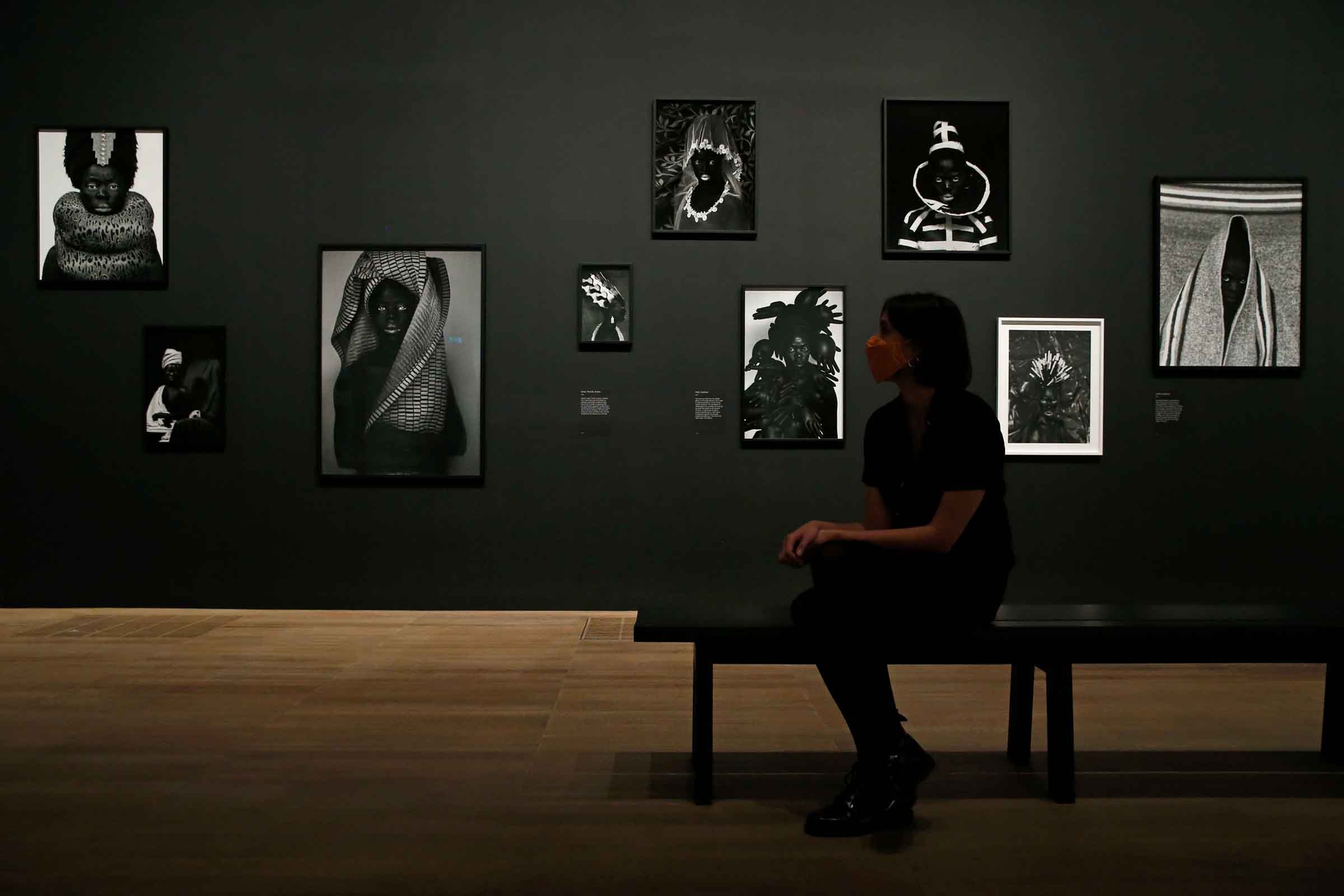
This attitude is not so different from the one that has defined their career in activism and art. In 2002, they co-founded the Forum of Empowerment of Women, a Black lesbian feminist advocacy organization, and founded Inkanyiso in 2009 as a forum for queer visual activist media. They have supported participants in their series financially to pursue their own photography classes, and have created mobile schools of photography, called Photo XP, which distribute cameras and teach photography. When Sarah Allen, assistant curator of international art at Tate, was doing research for the exhibition’s catalogue, every photographer documenting Black queer lives that she spoke to cited the influence of Muholi’s archive and work on their own projects.
Looking back on their body of work today, Muholi explains who it has all been for. “It never crossed my mind to think that this is my work; this work has always been for us, the community that I’m part of, and all those who relate to that community. I happen to be the messenger to capture that particular space, or that particular period, and present it in a different way,” they say, giving thanks to all the participants and collaborators who have informed their artistic and activist practice. “If we talk of people who are displaced, the people who are excluded, people who are vilified because of who they are, and then you have an image that I have produced that informs that particular issue and changes that person’s life, then in that way, I feel it’s beyond me. It becomes a project of the world.”
More Must-Reads from TIME
- Why Biden Dropped Out
- Ukraine’s Plan to Survive Trump
- The Rise of a New Kind of Parenting Guru
- The Chaos and Commotion of the RNC in Photos
- Why We All Have a Stake in Twisters’ Success
- 8 Eating Habits That Actually Improve Your Sleep
- Welcome to the Noah Lyles Olympics
- Get Our Paris Olympics Newsletter in Your Inbox
Contact us at letters@time.com
